Nokia 6.1 (2018) review
The Nokia 6.1 is part of the second wave of the new Nokia smartphones, and it's time for the resurgent brand to prove that it can offer more than just a single-hit of nostalgia.
The original Nokia 6 got a strong 4-star review with some caveats - notably the slow charging and average hardware. When the Nokia 6.1 was announced, there was a lot of excitement among Android purists about the updated design, upgraded chipset and addition of fast charging. The price has had a little bump too.
Before we get into whether it’s worth the extra spend, it’s worth mentioning that there’s some confusion around the name of this phone. The company itself calls it ‘the new Nokia 6’ in some places, and ‘Nokia 6.1’ in others, including on the box.
We’ll be using both in this review, but it’s useful to know because the Nokia 6 (2017) is still out there, and you’ll want to double check you’re buying the newer handset before you pull the trigger.
Nokia 6.1 (2018) price and availability
The new Nokia 6.1 price is $269 (£229, RS 16,999 about AU$420), which is slightly more than the launch price of its predecessor ($229, £200, AU$399).
It's available from retailers in the US, UK and India and will be coming to Australia in more regions soon.
Design and display
- Classy aluminum design with eye-catching accent colors
- Generous 1080p screen with glossy finish
- Weighty and not the most comfortable to hold
In true Nokia style, the Nokia 6.1 is built like a tank. The 148.8 x 75.8 x 8.6mm (including camera bump) unibody is made from 6000-series aluminum with flat diamond-cut sides, rounded corners and a highlight color on the outlines.
Our review model is the Black/Copper colorway, which is an innovative way to make yet another black rectangle look different - and classier - than its competition.
There’s also a gorgeous deep blue option with gold accents, and White/Iron, which is a pale silver with metallic reddish accents rather than the deep grey you might expect from the name - presumably we’re talking about oxidized iron, aka rust.
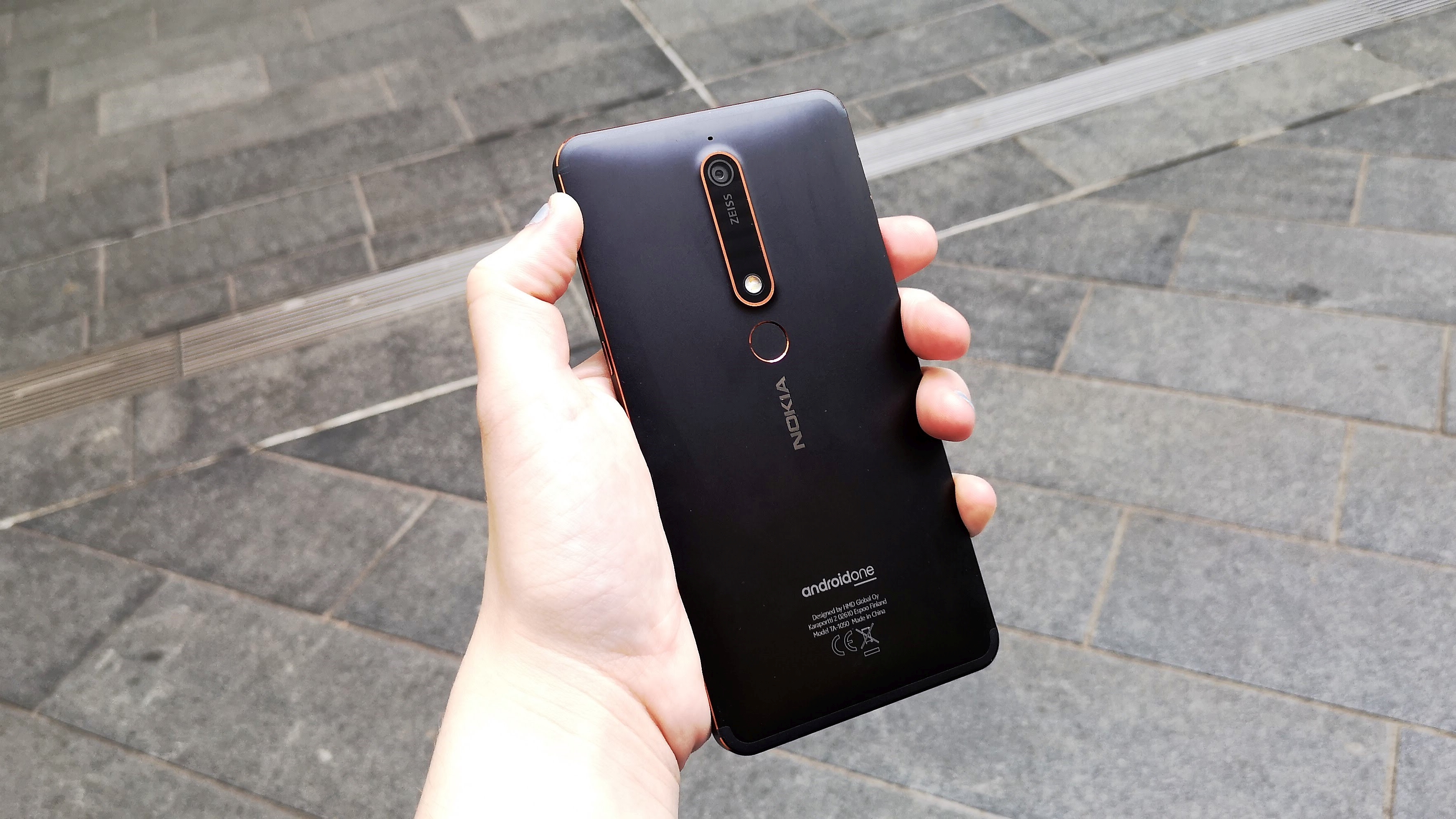
Between the all-metal body and the thickness of the handset, this is a weighty piece of tech at 172g and feels reassuringly like it could handle modern life without being cosseted in a case.
That said, after a couple of weeks of use and several drops, we have noticed a few small dings in the edges, so you might want to case it up anyway if you’re a perfectionist about that kind of thing.
Speaking of drops, the Gorilla Glass 3-covered screen is also built to last, sustaining no damage from our butter-finger tendencies (note: not a guarantee).
However, with its incredibly glossy, slightly rounded design, it does make the phone liable to fall straight off your desk if you put it face-down. Face-up it’s fine and has plenty of grip, but if you’re one of those people who flips your phone over for meetings, it might be better off in a pocket.
It’ll have to be a big pocket, though: the 5.5-inch screen and relative thickness at 8.6mm means this isn’t one of the sleeker phones on the market.
That means it’s not the comfiest to hold in your hand, either: smaller-pawed humans might well find it uncomfortable for long stretches, and it’s ridiculously easy to entirely muffle the solo downward-firing speaker on the bottom left with the heel of your hand.
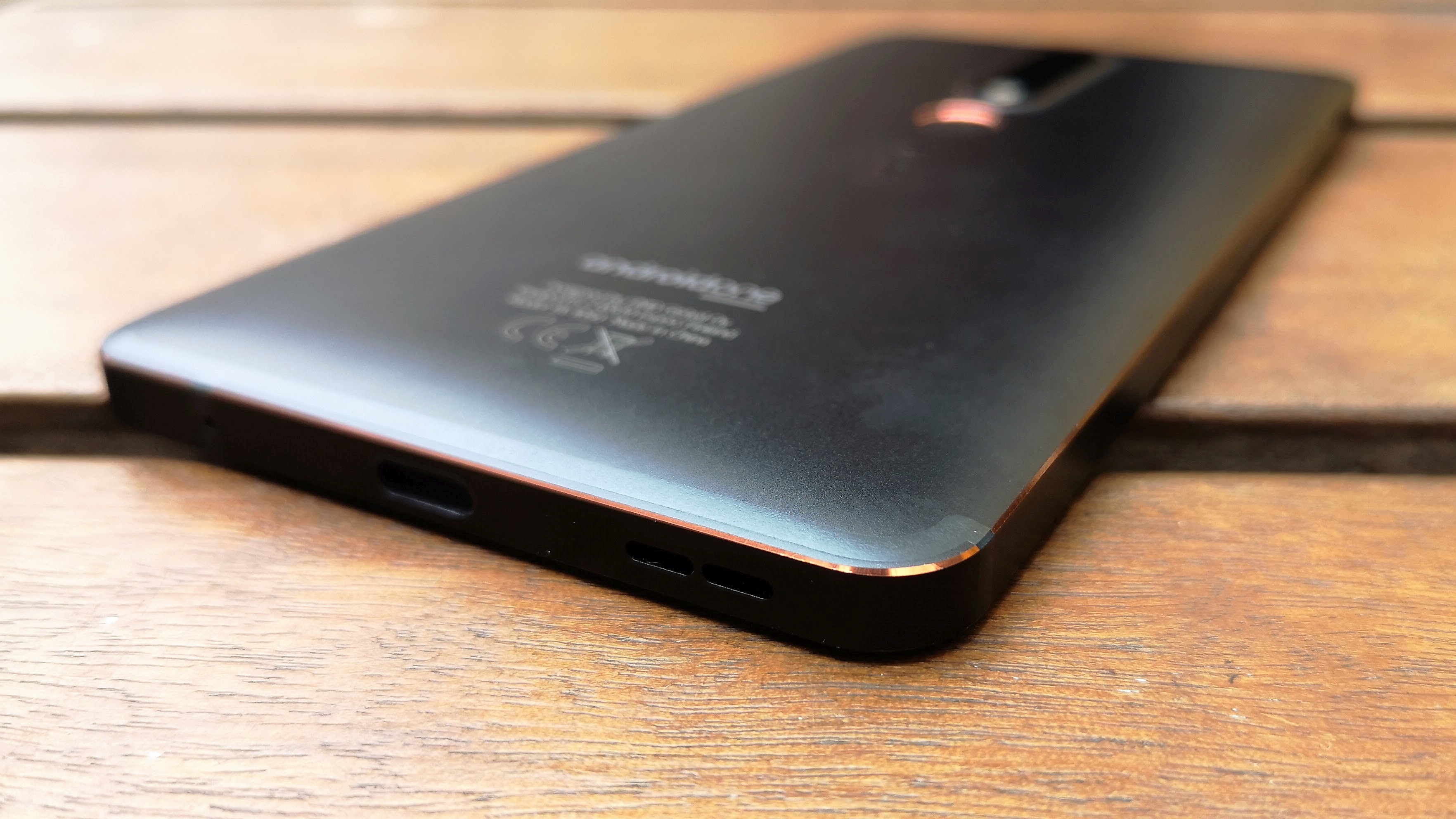
Assuming you’re on board with the chunky aesthetic, the Nokia 6.1 is an impressively good-looking piece of kit considering its price point.
The anodized back panel includes a long Zeiss-branded camera and flash opening, which protrudes a little. Below that is the fingerprint scanner, also ringed in the accent color, and past that is the sideways silver Nokia logo. That’s it for the back except for the Android One logo.
The face of the phone is similarly minimalist, relying on that super-glossy screen and the accent color to stand out, which it absolutely does.
There’s a small Nokia logo on the top right of the fairly large (for 2018) bezel, and there’s a thick black chin below the screen. This serves no obvious purpose as the fingerprint key is on the back and the nav buttons are software, but we can’t ask too much at the budget end of the market.
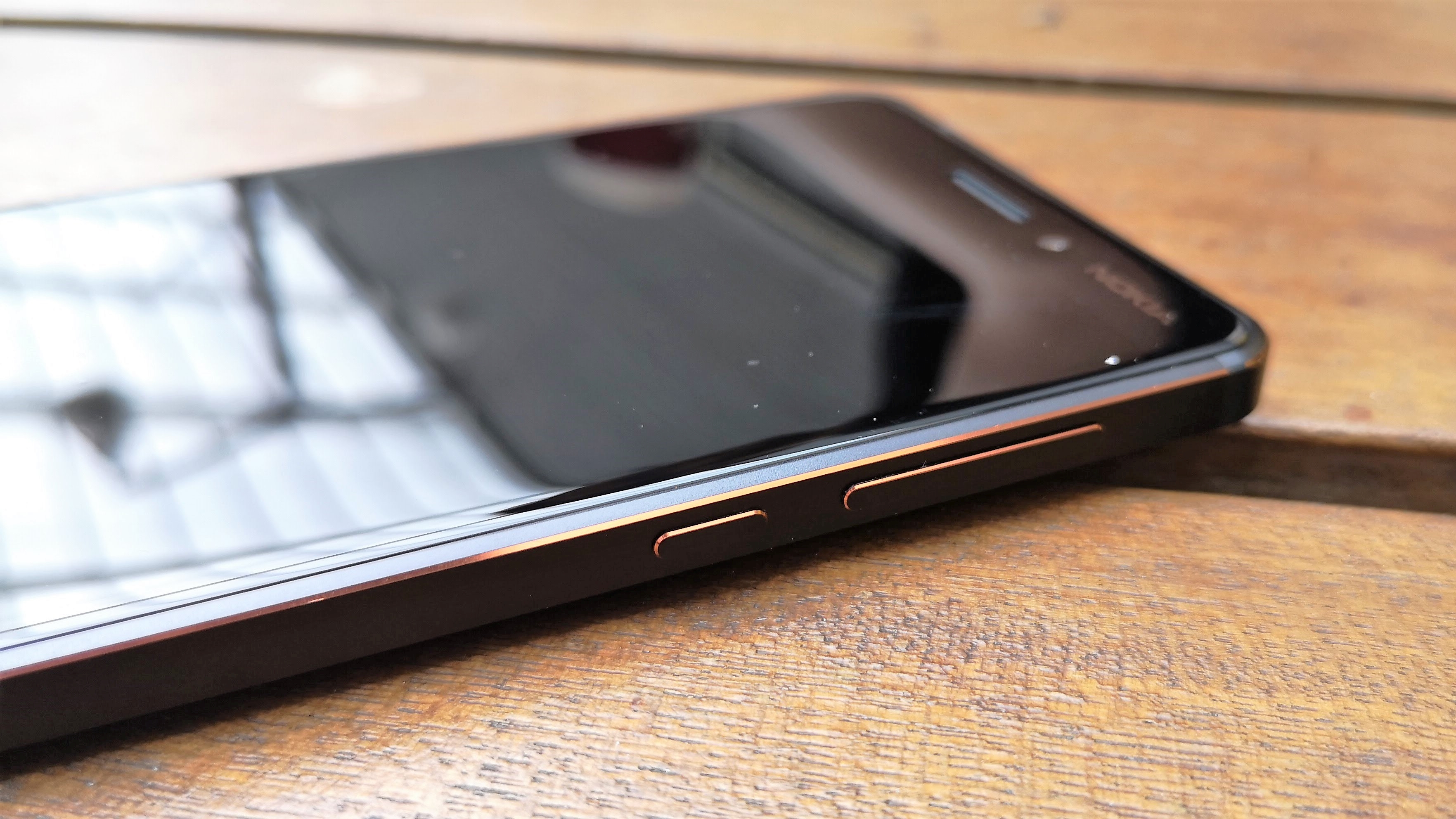
The left edge holds the SIM tray, there’s a proper headphone jack on the top right of the top edge, accented volume rocker and power key on the right edge, and a centered USB-C charging port on the bottom next to that left-mounted speaker.
Our only complaint about this layout is that it’s quite easy to miss the fingerprint pad by touch and smudge up the flash unit just above it. That said, at least you’re not putting your fingerprints all over the camera lens as with some phones.
You will, however, get your fingerprints all over the glossy screen and the aluminum back panel.
The 5.5-inch 16:9 screen of the Nokia 6.1 in particular is very smudgy, but it’s much less noticeable when the display is powered on.
It’s a lovely-looking screen, bright and sharp, and while of course it can’t compare to the pixel-packed displays of the top-end devices, it does offer a full HD (1080 x 1920, 403ppi) experience in a much less expensive package. As long as you don’t hold it next to a Samsung Galaxy S9, you should be happy.
Battery life
- 3,000mAh
- Usually lasts the day
- Fast charging
Considering how inexpensive it is, battery stamina on the Nokia 6 (2018) is better than you might expect.
Using it as our daily driver for everything from phone calls to music streaming, messaging and social media, we found a full charge was usually just about right for one day’s use.
That means it’ll be falling asleep by the time you are, but as long as you don’t push it too hard, it usually (just) lasts the day.
One of our complaints about the previous version of the Nokia 6 was the slow charging through the old-style micro USB port, and thankfully Nokia has sorted it out with fast charging and USB C.
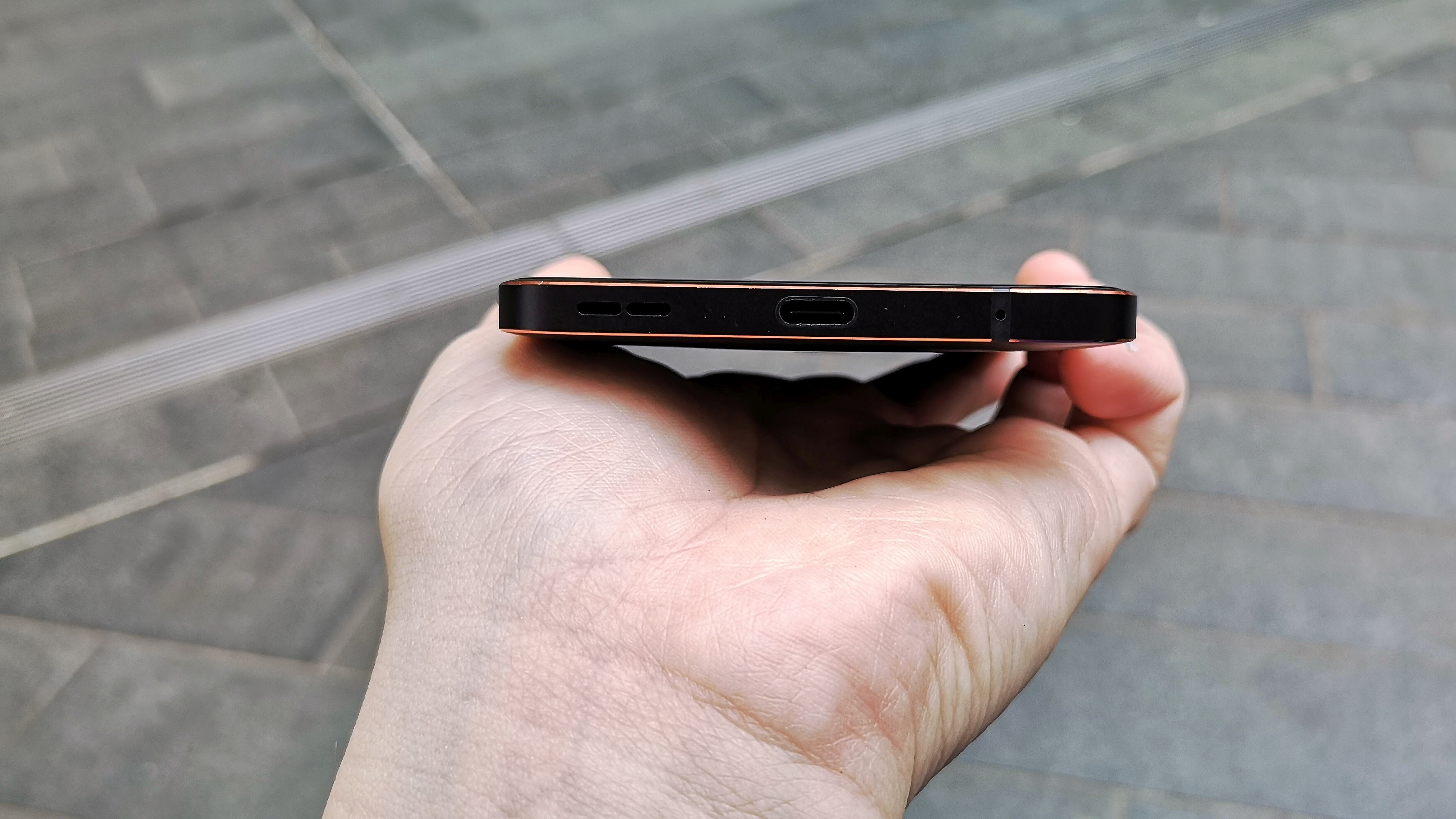
An hour’s charge bumped up the power by 40%, meaning charging is effectively twice as fast as on the 2017 edition, which took three hours to gain 60%. It’s still not as zippy as some devices on the market, but it’s plenty fast enough for most.
Running our usual battery test of streaming a 90-minute full HD video in full screen with brightness on max and accounts syncing in the background, from a full charge our Nokia 6.1 lost 23%.
Considering the previous version lost 22% in the same test, it seems fair to say that stamina hasn’t improved on the new edition in line with the speed of charging. Still, at least it won’t take as long to get back to full.
The Honor 7X and Moto G5 showed the same result as the previous Nokia 6, so only slightly better than the 6.1 at 22%. The LG Q6, however, lost significantly less power at 16%, so that might be a better phone choice if you’re all about the stamina.
Camera
- 16MP solo rear camera, f/2.0 and dual-tone LED flash
- 8MP fixed-focus selfie camera, f/2.0
- 4K video recording at 30fps

The camera is often the downside of a suspiciously cheap, good-looking smartphone, but that’s begun to change recently, and thankfully the Nokia 6 (2018) is part of the vanguard.
It may not have the spangly AI or dual-camera chops of competing handsets, but the Carl Zeiss lens and native Android camera app team up to take reliably great photos.
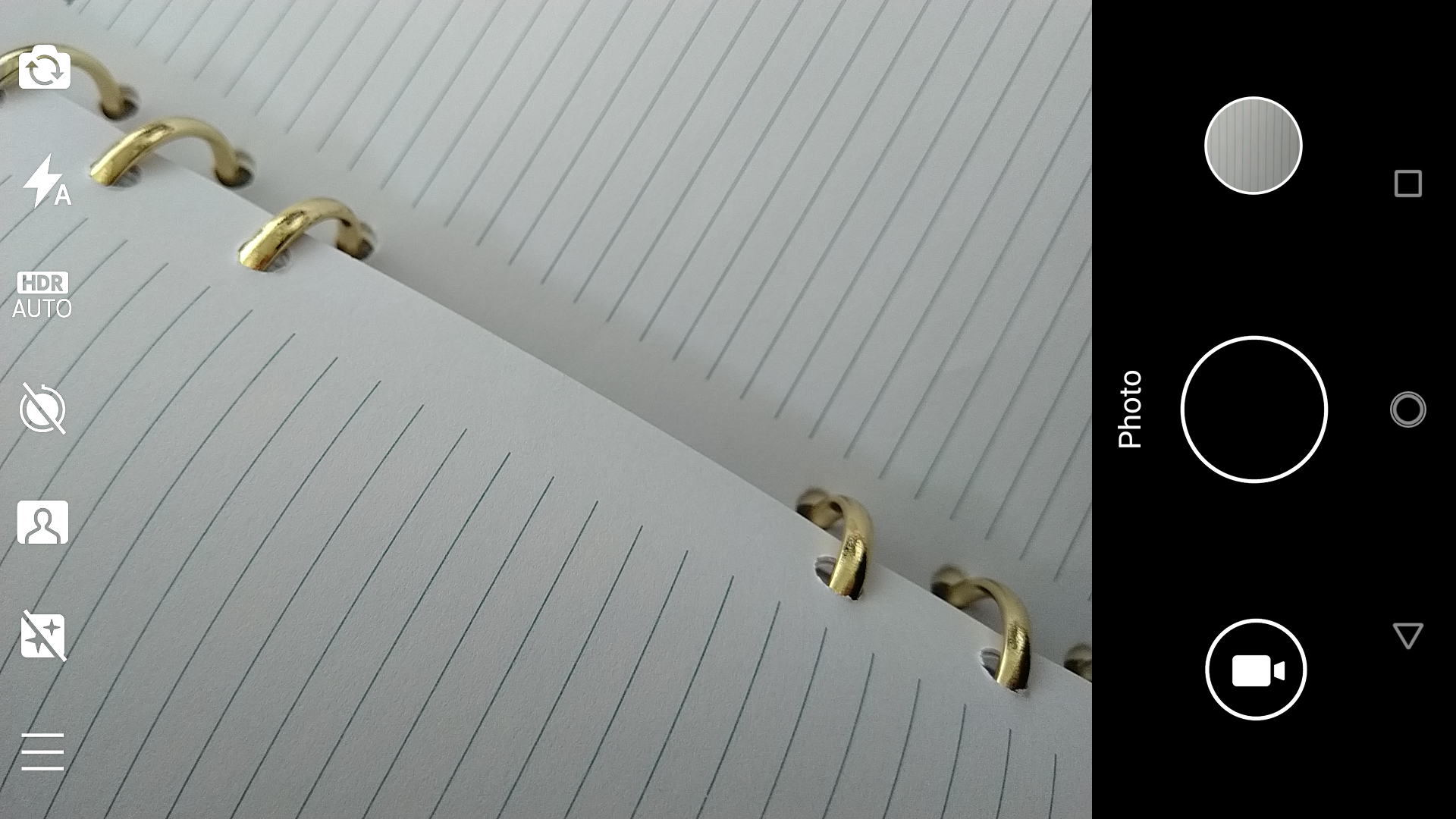
The camera does struggle with trickier lighting situations: in sunlight we sometimes got overexposure and blown-out highlights, and in low light some areas seemed to disappear. And generally speaking, a lot of our photos came out a little darker and duller than we’d expect, but a quick tweak in Google Photos was enough to put it right.
Nonetheless, give it good lighting, a little patience (it can be slow to focus at times) and the Nokia 6.1 will give you a bright, shareable shot that’ll do your Instagram feed proud.
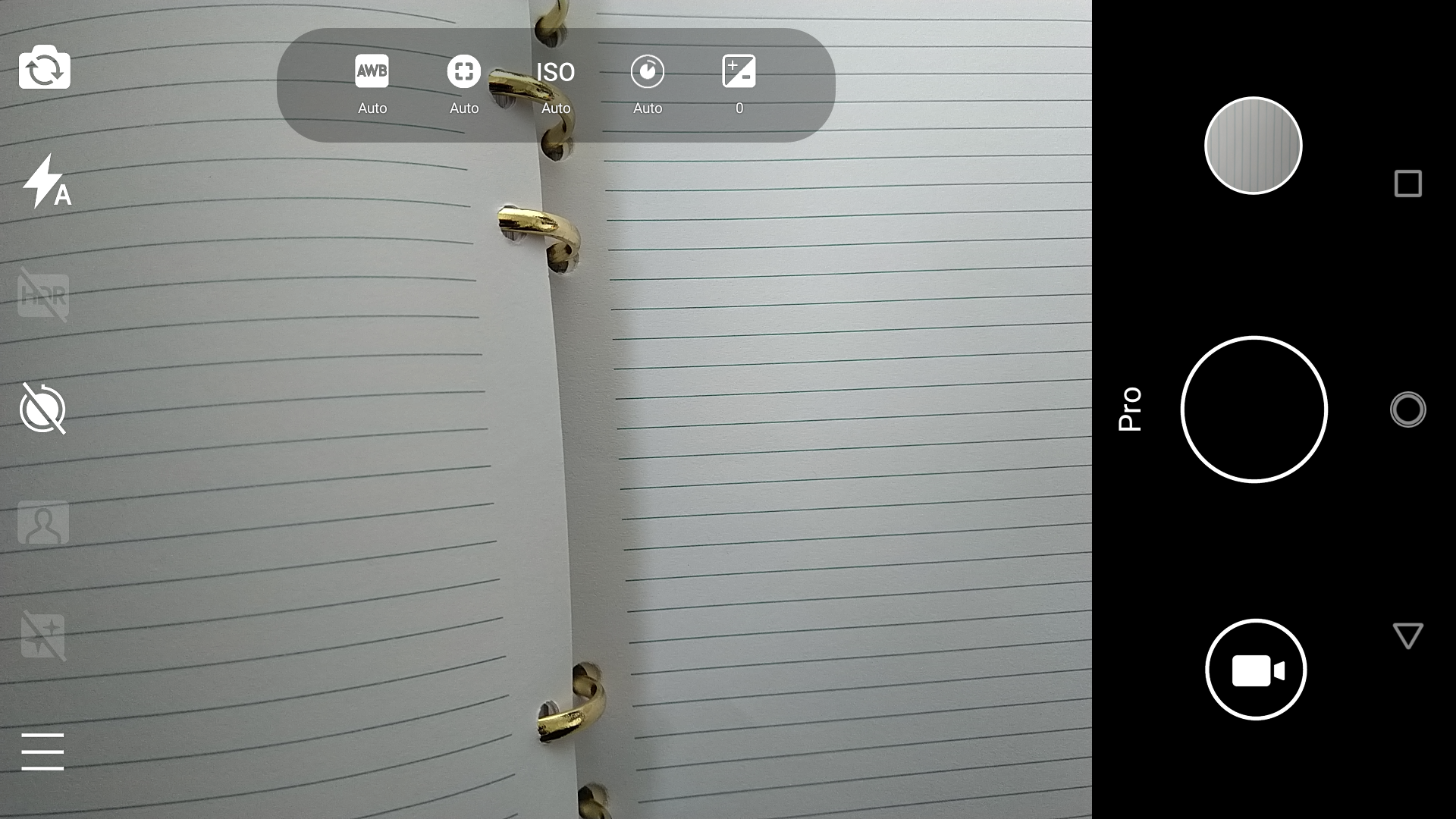
The 8MP front-facing camera takes perfectly good selfies, with an optional beauty mode (on a slider from first thing in the morning to uncanny valley). However, it’s fixed focus, so you lose a little control there, especially when taking pictures of something other than a face.
Again, it’s not the best in low light environments, but at least if you do take your Nokia 6 (2018) to the club, you know it’s probably not going to smash on the dance floor.
Camera samples
The Android One that you want
- Stock Android 8.1 Oreo
- Guaranteed Android updates
- Some minor crashes
The Nokia 6.1 is part of the Android One program, which basically means it includes stock Android and timely updates.
It’s a bit confusing, because when Android One was launched back in ‘14, it was for low-end phones in the developing world, and so some people still think of it as ‘Android Lite.’
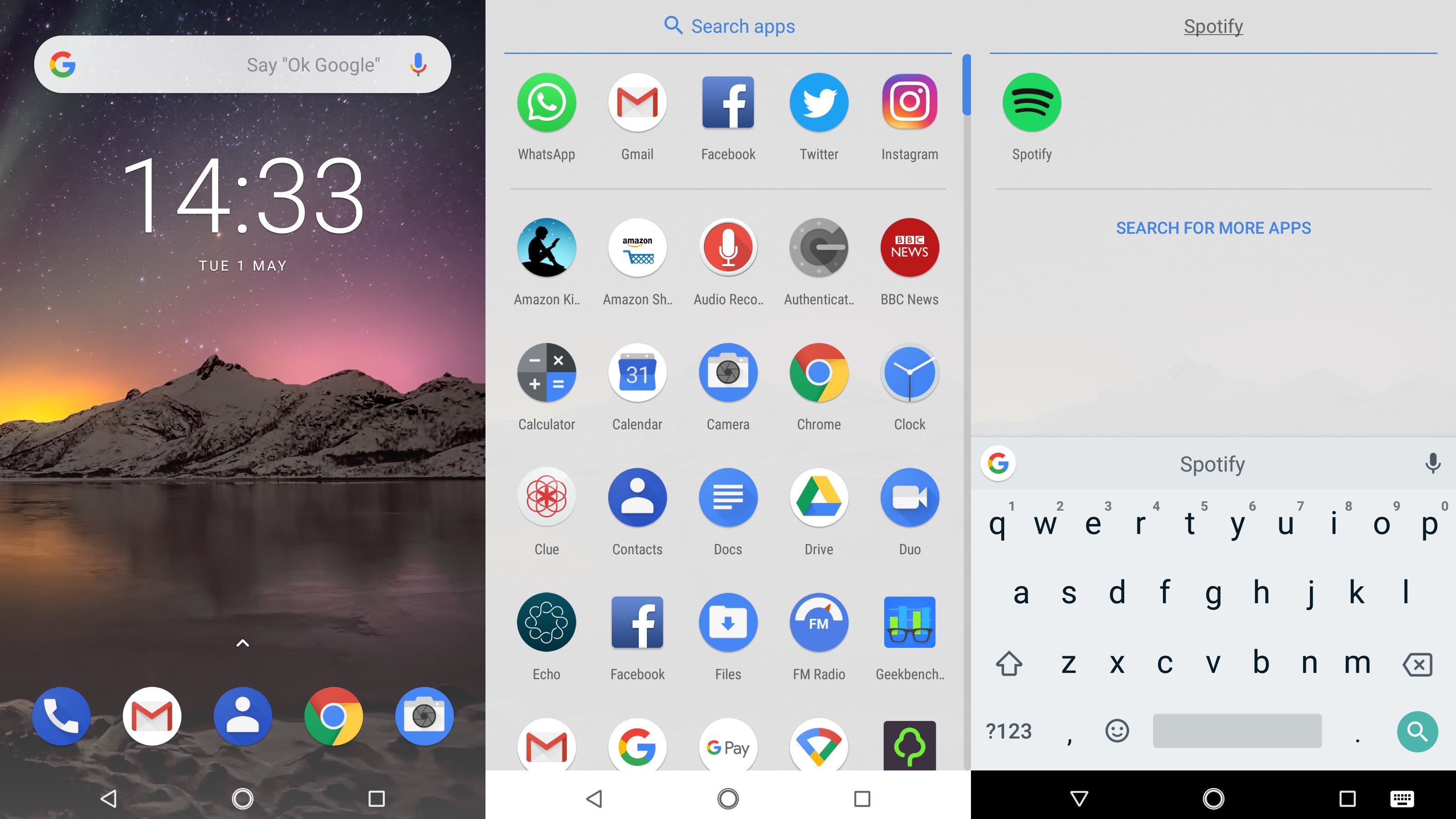
However, the Nokia 6 (2018) comes with fully-fledged Android 8.1 Oreo, as well as a guarantee that it’ll receive regular security patches and two years’ worth of OS updates.
That adds an element of reassurance that the phone should receive Android P, as well as giving the Nokia an edge over devices with manufacturer overlays like Huawei’s on the similarly-priced Honor 7X.
The software experience on the Nokia 6.1, then, is exactly as you’d imagine: pure, unspoilt Android.
Of course, you’re also relying on the hardware to deliver a good all-round experience, and in our testing, we did run into some crashes and hangs on the Nokia 6 (2018). However, it was fairly rare, and to be fair we did really put the phone through its paces with multitasking and switching.
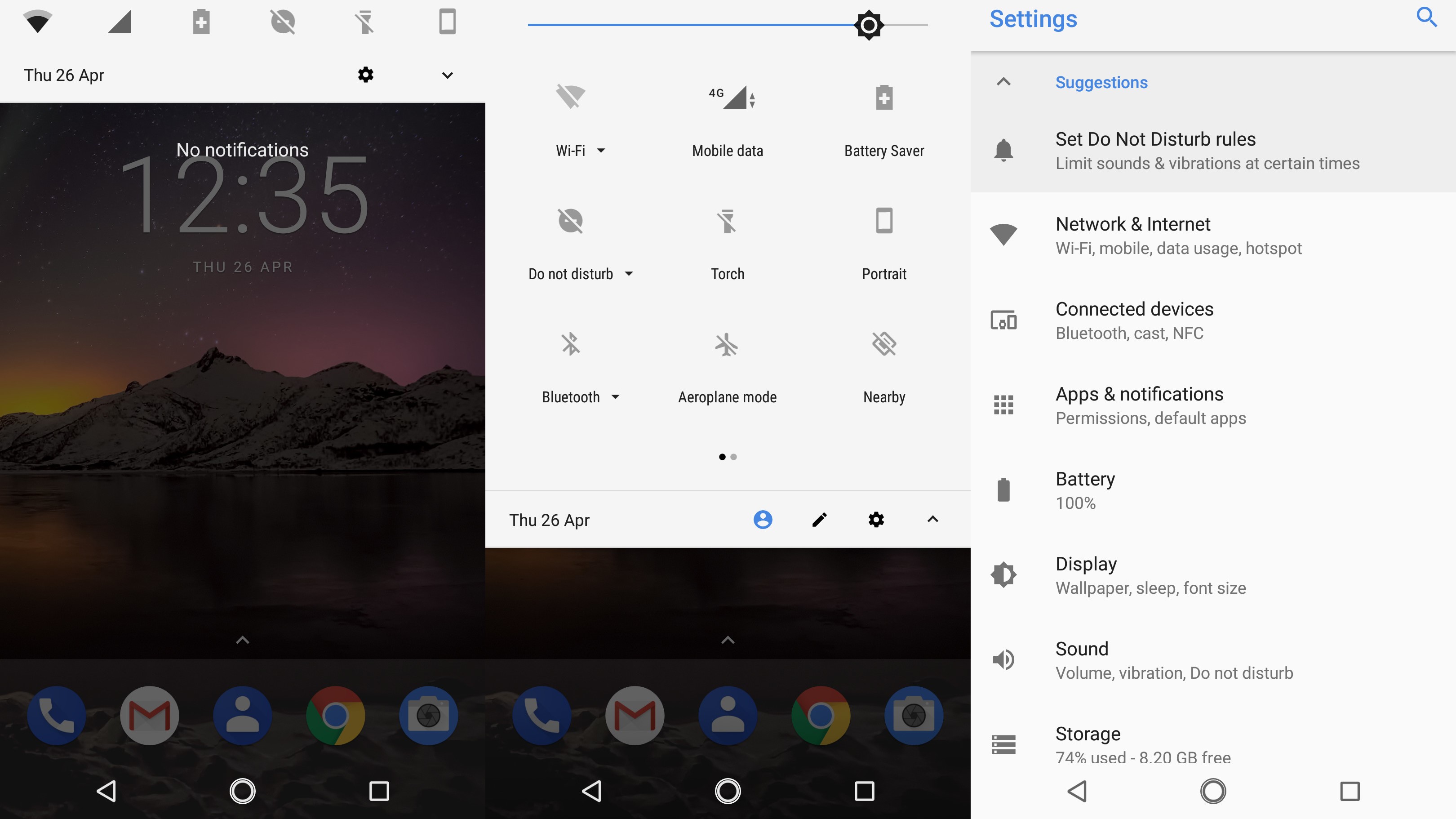
We ran the Geekbench 4 benchmarking app on the Nokia 6 (2018) and it averaged a multi-core score of 4,177, which is leaps and bounds better than its predecessor’s score of 2,736.
That’s the Snapdragon 630 in effect and puts the 6.1 on a favorable footing with competitors like the Moto G5 (2,377) and Honor 7X (3,579). It’s not going to touch the flagships (the iPhone X scored over 10k), but in its price bracket and especially compared with the last Nokia 6, it’s looking pretty good.
Looks good, sounds okay
- Large, lovely HD screen
- Single speaker is a little weak
- Solid gaming performance
Audio on the Nokia 6 (2018) is somewhat disappointing. The solo downward-facing speaker on the left bottom edge of the handset is okay, but sound gets thin at higher volumes, and holding it in your hand without cutting off the sound is tricky. Definitely not one for parties.
The earphones in the box are also cheap and flimsy, and should ideally only be used as backups if you forgot your main ‘phones and are on a train with a child nearby.

However, you do at least have a proper 3.5mm headphone jack on the top right, which means it’s easy to plug in your existing headphones without faffing about with dongles. It also means you can charge and listen to things at the same time, unlike on many recent USB-C phones.
You get 32GB of storage built into the Nokia 6.1, which is realistically about the minimum even a budget phone can offer these days (please no more 16GB phones). However, Nokia has included a microSD slot that can take up to a 256GB card if you need more.
The 5.5-inch full HD display might not be part of the current trend for 18:9 screens (or notches, if that’s your jam), but nonetheless it displays media well.
At 403 pixels per inch, it offers a wide range of brightness settings, with color and clarity plenty good enough for enjoying your photos and marathoning Netflix.
It can’t hold a candle to the higher-end displays on this year’s flagships of course, but realistically you won’t notice unless they’re side by side.

Gaming is a similar story: the octa-core Snapdragon 630 chipset (clocked at 2.2GHz) and 3GB of RAM will fulfil most people’s gaming needs perfectly, but it’s not going to stand up to a higher-end smartphone designed with players in mind.
In our testing, we only had a couple of crash and lag issues with particularly intensive titles - other than that, the Nokia 6 (2018) delivers a smooth, enjoyable gaming experience.
Verdict
It says a lot about the quality of the Nokia 6.1 that many of the downsides we could attribute to it wouldn’t realistically be expected on a phone of this price in 2018.
Admittedly, it doesn’t offer wireless charging, a dual-lens rear camera, waterproofing or an 18:9 display, but nor do many of the other phones in its price bracket, and some of those are lacking even more basic features (fingerprint scanners and NFC come to mind).
The new Nokia 6 offers a pleasing upgrade on the hardware and experience of its predecessor, and the result is a very attractive package for the price. It won’t suit everyone, but anyone who’s been rooting for Nokia should feel pretty damn vindicated.
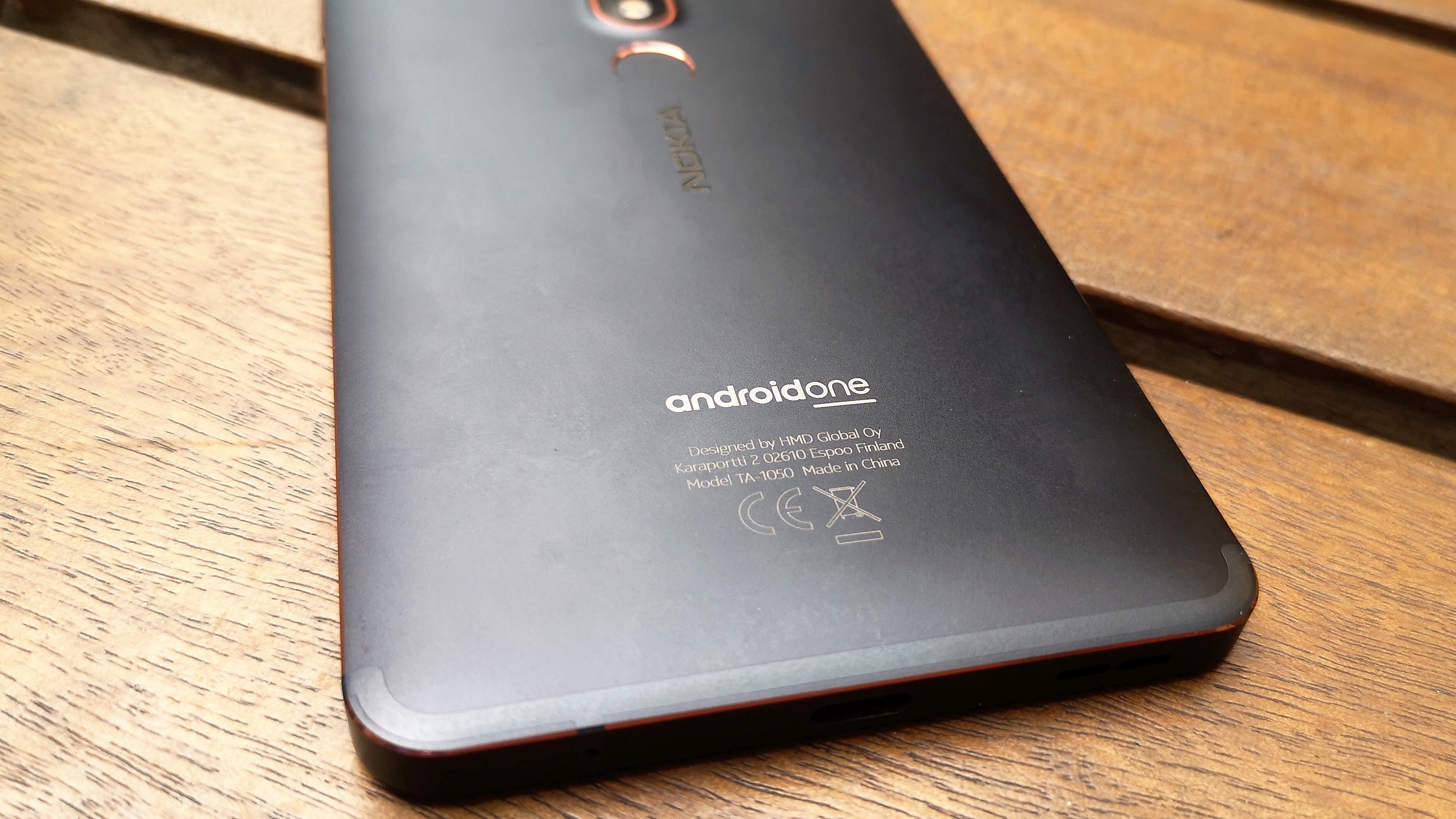
Who’s this for?
Android fans who miss the days of tough-as-nails Nokia phones, and want something that will fulfill their needs day-to-day without sacrificing much in the way of looks or capability will be pleased with what the Nokia 6.1 has to offer.
Should you buy it?
If you want an affordable daily driver that can comfortably handle most smartphone tasks, offers stock Android with guaranteed updates, includes nice-to-haves like a fingerprint scanner and NFC, and stylishly stands out from the black rectangle brigade, the 2018 edition of the Nokia 6.1 might just be your new best friend.
After an alternative? Consider these three phones:
LG Q6
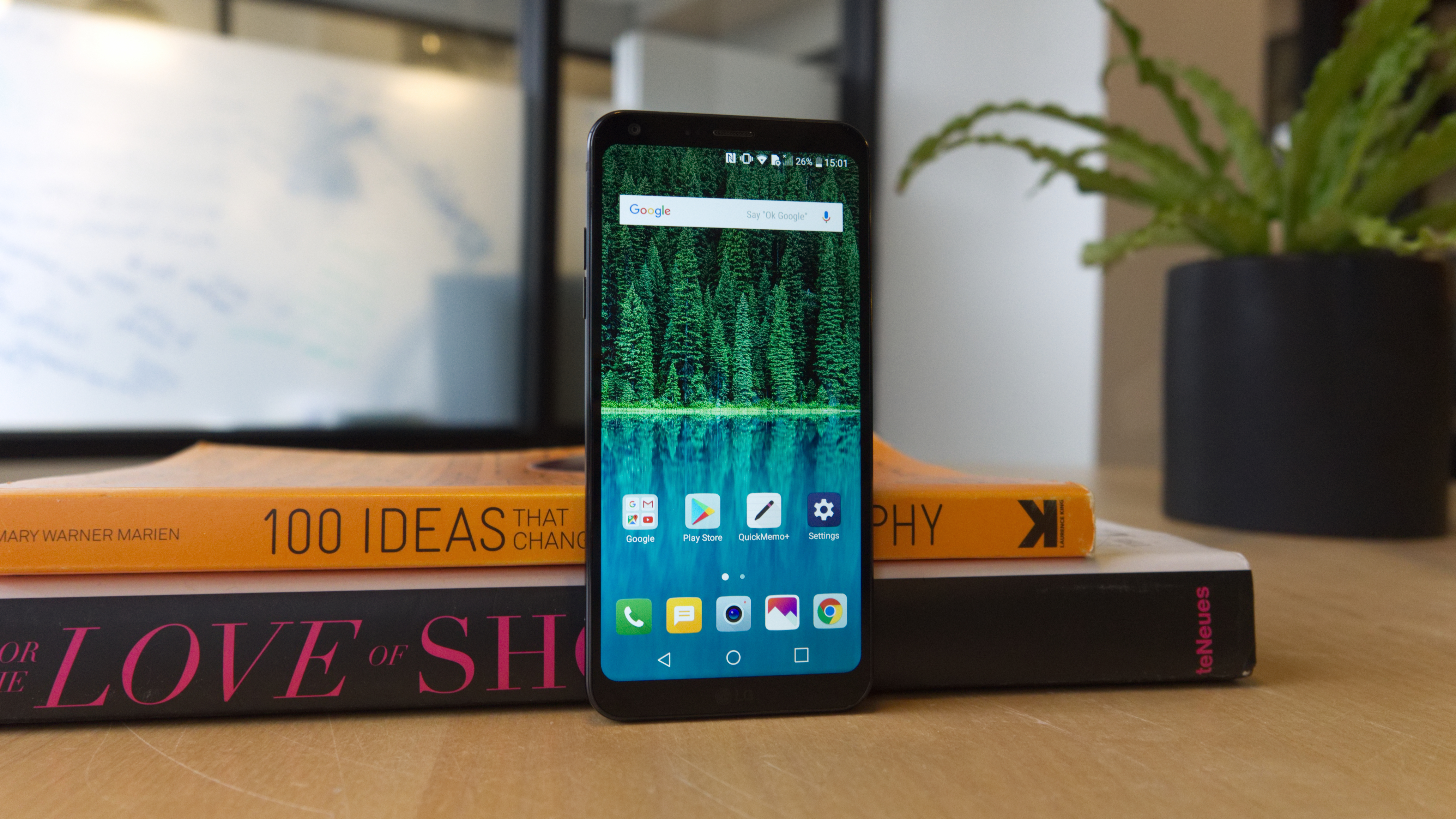
The (unofficial) LG G6 Mini is a good all-rounder with some annoying downsides. You won’t find a fingerprint sensor on this one and the plastic back scratches pretty easily, but you do get a glorious FullVision display, a great camera and the good looks of the full-size LG G6 in a cheaper package.
Read our full LG Q6 review
Moto G6
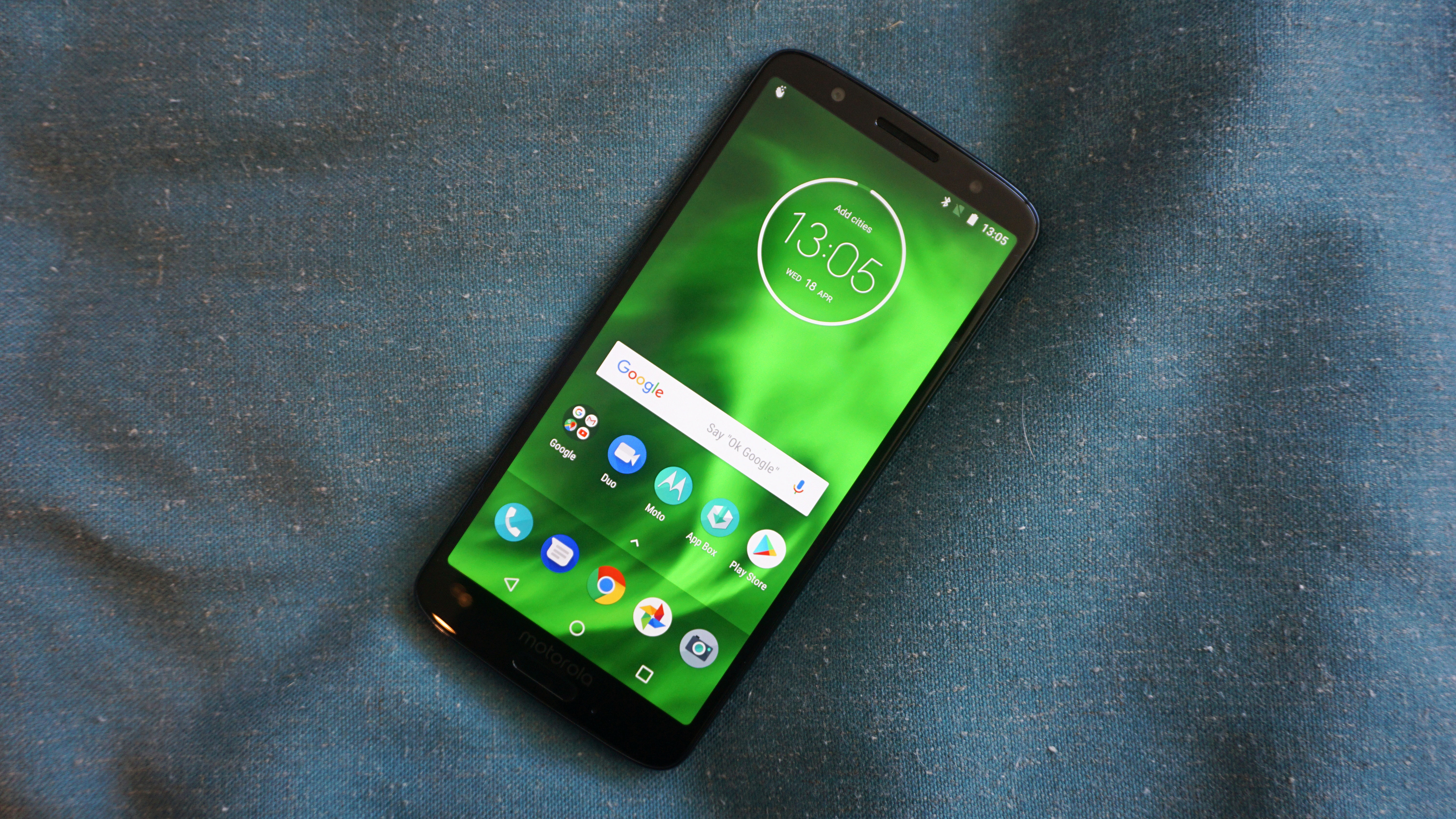
The newest version of Motorola’s super-popular budget range is, as ever, the phone to beat. With a 5.7-inch 18:9 full HD display, dual rear cameras, stock Android, a front-mounted fingerprint sensor and a splash-proof aluminum body, the G6 has a lot of high points.
However, its chipset isn’t as good as the Nokia’s and it can’t shoot 4K video.
Read our Moto G6 review
Honor 7X
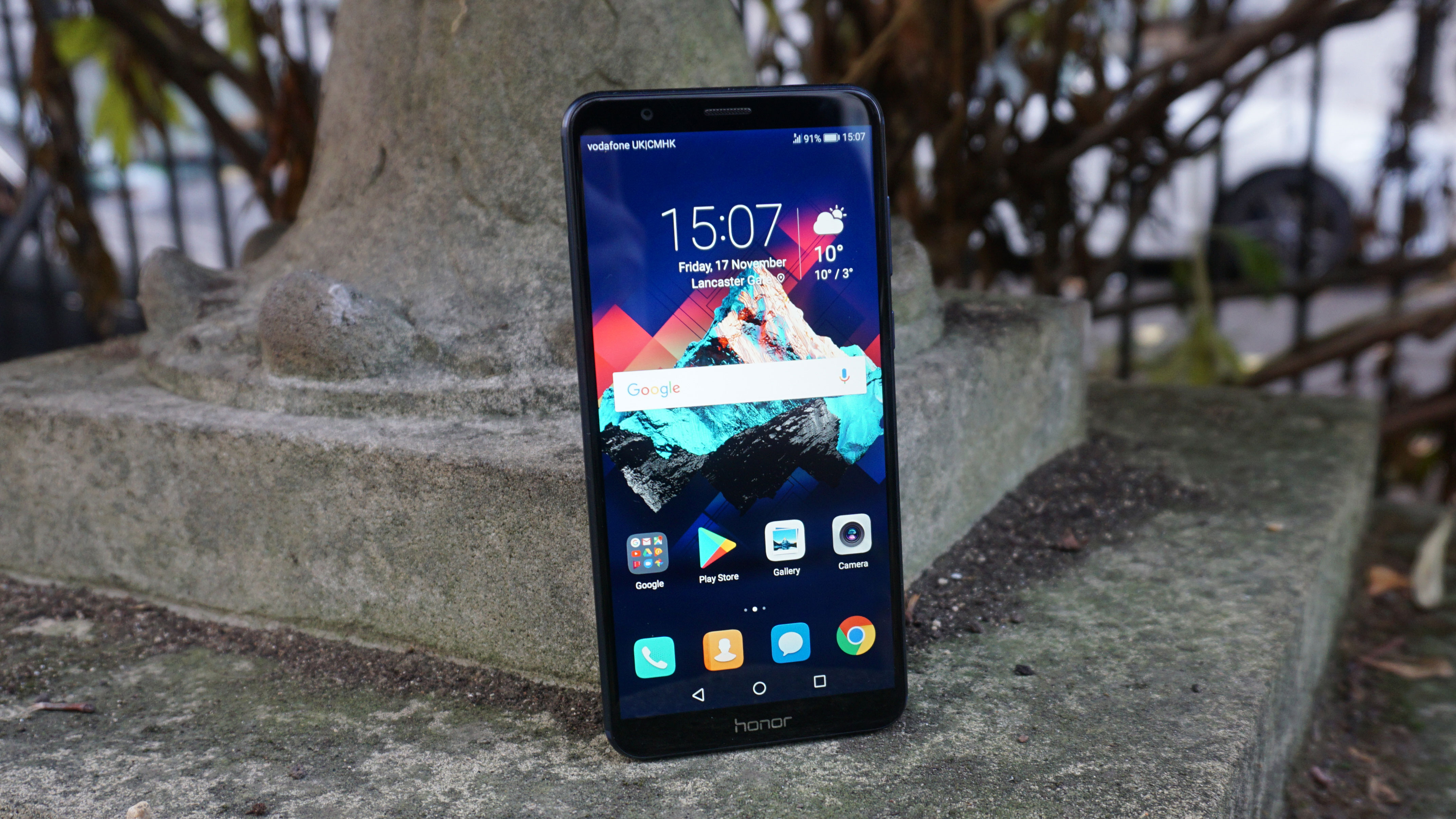
Another low-to-mid-range phone with an 18:9 screen, the Honor 7X offers a stylishly slim all-metal design, 3,340mAh battery, dual rear cameras and 5.93 inches of Gorilla Glass-covered display.
However, it doesn’t have NFC, can’t shoot in 4K and has Huawei’s Android overlay software installed, so it won’t suit everyone.
Read our full Honor 7X review
First reviewed: April 2018
0 comments:
Post a Comment